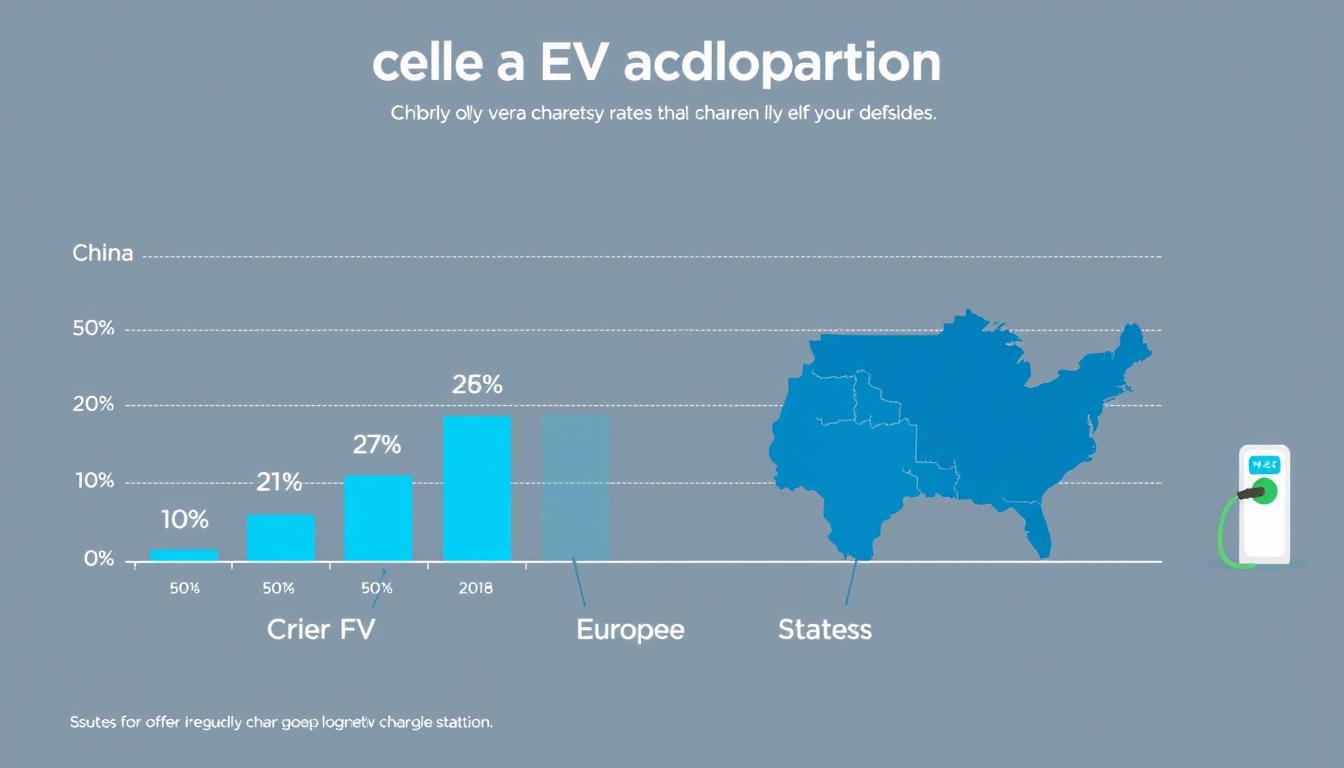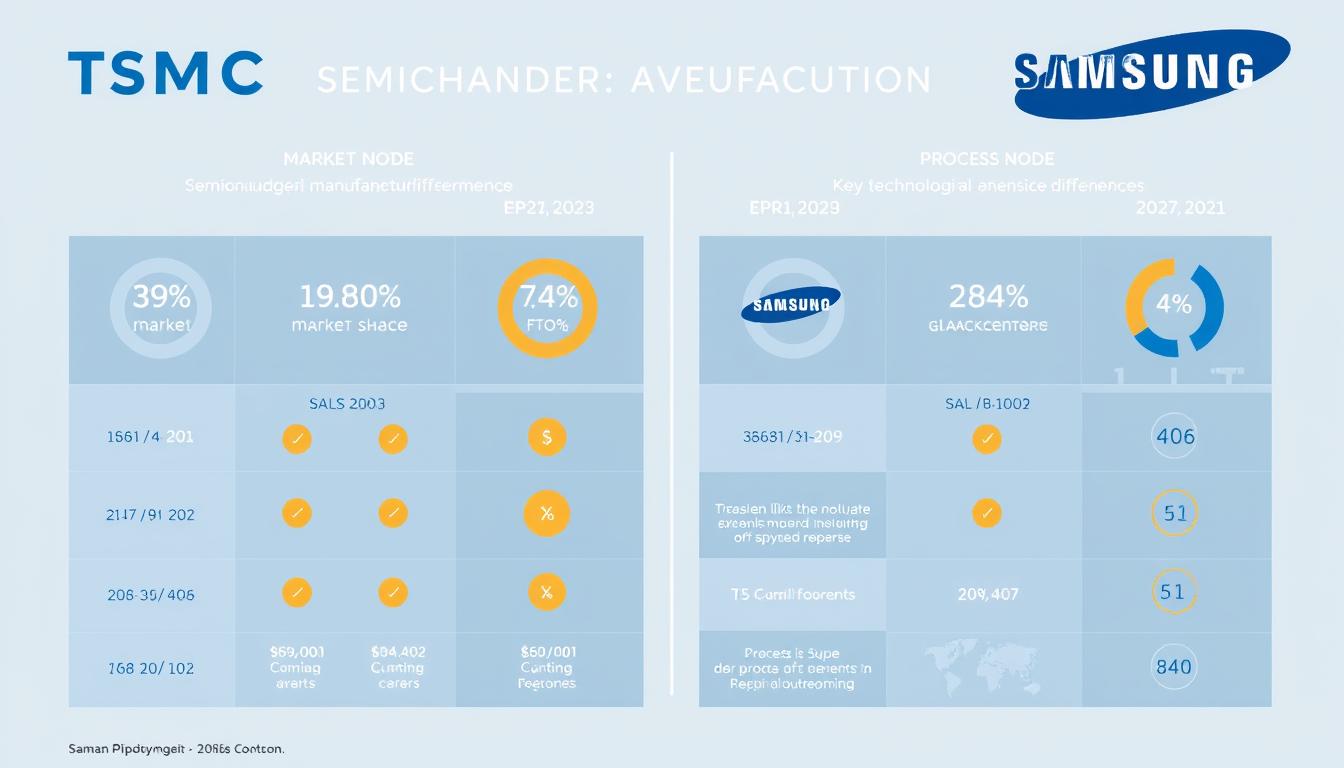What does it take for a decades-old game publisher to thrive in an industry now dominated by streaming platforms and blockchain innovation? As players demand seamless cloud gaming experiences, companies like Konami face a pivotal crossroads. Once known for iconic franchises, the firm now races to adapt as rivals like Square Enix invest heavily in WEB3 integration and decentralized ecosystems.
The global shift toward streaming-first models has reshaped how teams develop interactive content. Konami’s recent partnerships with blockchain validators and metaverse-focused platforms signal a strategic pivot. Collaborations with networks like Oasys highlight efforts to merge classic gameplay with cutting-edge technology, mirroring moves by Sega and GREE.
Yet challenges remain. Balancing nostalgia-driven titles with experimental player engagement tools requires precise execution. Talent acquisition campaigns targeting blockchain developers suggest urgency, while competitors leverage established IPs like Final Fantasy to test NFT integrations. Success hinges on delivering fresh experiences without alienating longtime fans.
Key Takeaways
- Legacy publishers must innovate rapidly to stay relevant in cloud-based markets.
- Blockchain partnerships are reshaping content distribution models across the industry.
- Player expectations now include cross-platform accessibility and digital ownership features.
- Technical collaborations, like Konami’s Oasys alliance, aim to reduce latency in streaming games.
- Balancing classic franchises with emerging tech remains a critical challenge.
Introduction to Cloud Gaming and Japanese Innovation
The gaming world is undergoing its most dramatic transformation since the shift from arcades to home consoles. Cloud streaming eliminates hardware barriers, letting players access titles instantly across devices. This shift redefines how game developers design experiences, prioritizing seamless connectivity over platform limitations.
Setting the Stage for a New Era
Japanese studios have long shaped global gaming trends. From Street Fighter revolutionizing competitive play to Final Fantasy pioneering narrative depth, these innovations built a $20 billion industry. Last year, mobile titles accounted for 65% of domestic revenue, showcasing players’ appetite for accessible formats.
Companies like Square Enix now blend iconic franchises with cloud-first strategies. Bandai Namco recently partnered with telecom giants to reduce streaming latency, ensuring smoother gameplay for fighting series like Tekken. Such moves highlight a broader pivot toward infrastructure-focused development.
Key Shifts in the Gaming Landscape
Physical game sales dropped 22% globally last year as digital storefronts and subscription services surged. Publishers increasingly prioritize cross-platform ecosystems—Square Enix’s Forspoken launched simultaneously on PlayStation and cloud platforms, while Bandai Namco tests AI-driven dynamic difficulty scaling.
The industry’s growth hinges on merging nostalgia with technical ambition. Legendary franchises now serve as testing grounds for blockchain integrations and real-time crowd mechanics. As one developer noted, “Players demand ownership of digital assets—it’s no longer just about high scores.”
The Rise of Cloud Gaming Technologies
High-speed networks and blockchain breakthroughs are redefining how gamers interact with digital worlds in the gaming industry. These innovations enable instant access to immersive experiences across various games and devices while addressing long-standing technical hurdles. Developers now prioritize infrastructure capable of supporting millions of simultaneous users without compromising performance.
Advancements in Network Infrastructure
Modern cloud platforms rely on multi-layered architectures to reduce latency. Oasys, a blockchain-focused network, uses a unique dual-layer system: one for fast transactions and another for complex smart contracts. This design slashes fees by 80% compared to traditional networks while maintaining speeds under 2 seconds per action.
Proof-of-Stake consensus mechanisms further enhance efficiency. Unlike energy-intensive mining models, this approach lets validators secure networks using existing tokens. For players, this means smoother gameplay and reduced environmental impact—a critical factor as eco-conscious trends shape the entertainment industry.
Emerging Cloud Platforms and Their Features
Scalability remains a top priority for new services. Platforms now auto-adjust server capacity during peak hours, ensuring stable performance even when user counts spike. Low transaction fees also enable microtransactions, letting developers monetize through cosmetic items or battle passes without alienating casual gamers.
| Platform | Key Feature | Transaction Speed | Fees |
|---|---|---|---|
| Oasys | Dual-layer blockchain | 1.5 seconds | $0.001 |
| StreamX | AI-driven scaling | Instant | Free tier available |
| NexPlay | Cross-platform NFTs | 3 seconds | $0.05 |
Rapid development cycles keep platforms competitive. Teams deploy updates in days rather than weeks, testing features like dynamic resolution scaling or real-time asset trading. As one engineer noted, “Iteration speed determines market survival now.” This urgency drives both technical progress and creative marketing strategies to educate players about new capabilities.
Can Japan’s Konami Compete in the Cloud Gaming Era
Legacy game publishers face a critical test: evolve or fade. Konami’s recent blockchain hiring spree and NFT releases—like its Castlevania-themed collectibles—signal a shift toward decentralized ecosystems. Yet this pivot contrasts sharply with its reputation for single-player classics such as Metal Gear Solid and Silent Hill. As companies in the gaming business develop new plans, the attention on these games is part of a larger experience that gamers expect from their favorite titles, including franchises like Street Fighter.

Square Enix and Bandai Namco offer instructive comparisons. While Square Enix launched the blockchain game Symbiogenesis last year, Konami’s NFT experiments remain smaller in scale. Bandai Namco’s cloud infrastructure partnerships with telecom firms also highlight divergent strategies for reducing streaming latency.
| Company | Blockchain Initiatives | Cloud Partnerships | NFT Strategy |
|---|---|---|---|
| Konami | Recruiting blockchain developers | Limited public details | Themed collections (e.g., Castlevania) |
| Square Enix | Symbiogenesis launch | Multi-platform releases | Character-based assets |
| Bandai Namco | Tokenized rewards system | Telecom alliances for 5G streaming | Cross-game cosmetics |
Player expectations now demand both nostalgia and innovation. Franchises like Final Fantasy integrate blockchain elements without abandoning story-driven gameplay—a balance Konami struggles to achieve. Its 2023 job postings for WEB3 experts suggest urgency, but execution risks alienating fans accustomed to polished single-player experiences.
The challenge lies in merging technical ambition with creative vision. While competitors test play-to-earn models and dynamic cloud features, Konami’s incremental approach raises questions about its ability to lead rather than follow trends.
Konami’s Strategy in the Cloud Gaming Landscape
Adapting to cloud-driven markets requires more than nostalgia—it demands technical reinvention in the gaming industry. The company has launched aggressive recruitment campaigns targeting blockchain architects and cloud infrastructure specialists, which are essential for the development of innovative games. Over 40% of its 2023 engineering job postings emphasized “system construction” expertise, signaling a shift toward decentralized service models that attract gamers and capture their attention.

Talent Recruitment and System Construction
Building competitive platforms starts with skilled teams. Konami now prioritizes developers fluent in smart contracts and real-time data streaming—skills rarely highlighted in its past hires. This mirrors moves by Square Enix, which onboarded 150 blockchain experts ahead of its Symbiogenesis launch. Strategic hiring enables faster iteration cycles, critical for cloud-native titles requiring seamless cross-device play.
Leveraging WEB3 and Blockchain in Service Development
WEB3 integration aims to transform how players interact with franchises. Limited-edition Castlevania NFTs tested decentralized ownership concepts, though adoption trailed Bandai Namco’s tokenized reward systems. One developer noted, “Blockchain isn’t just about monetization—it’s creating persistent worlds where assets outlive individual games.”
| Publisher | Focus Area | Key Initiative |
|---|---|---|
| Konami | NFT Collectibles | Castlevania digital art series |
| Square Enix | Play-to-Earn Mechanics | Final Fantasy token ecosystems |
| Bandai Namco | Cross-Platform Assets | 5G-enabled Tekken skins |
Transitioning from boxed products to live services introduces friction. However, partnerships with blockchain validators could streamline distribution, letting gamers trade items across titles like Street Fighter cosmetics. Success hinges on balancing innovation with the polished gameplay that defined classics such as Metal Gear Solid.
Industry Trends in Cloud Gaming and Blockchain
Blockchain technology is redefining core aspects of game design, shifting how publishers approach ownership and player engagement. Its decentralized frameworks enable secure asset trading and transparent in-game economies, creating persistent value beyond individual titles. Platforms like Oasys demonstrate this shift, with its gaming-optimized blockchain reducing gas fees by 90% compared to Ethereum.

Blockchain’s Role in Gaming Innovation
Decentralized ledgers solve critical challenges in digital ownership. For example, Oasys’ partnership with Sega allows players to trade rare series-themed NFTs across multiple games. Unlike traditional models, blockchain verifies item scarcity without centralized oversight. This builds trust and encourages long-term investment in virtual economies.
Security improvements are equally transformative. Avalanche’s subnet architecture processes 4,500 transactions per second—ideal for competitive multiplayer experiences. Polygon’s zk-rollups further enhance privacy, letting developers integrate blockchain features without compromising speed. As one engineer noted, “Players want proof of ownership, not just flashy graphics.”
Comparative Analysis With Global Publishers
Japanese studios prioritize cautious integration compared to Western counterparts. While Square Enix tests tokenized rewards in Final Fantasy, companies like Ubisoft experiment with full NFT marketplaces for Assassin’s Creed assets. This divergence reflects regional attitudes toward risk and player expectations.
| Region | Adoption Focus | Key Platform | Transaction Speed |
|---|---|---|---|
| Japan | Limited NFT Collections | Oasys | 1.5 seconds |
| West | Play-to-Earn Ecosystems | Immutable | 2 seconds |
| Southeast Asia | Cross-Game Assets | Sky Mavis | 3 seconds |
Technical hurdles remain. Bandai Namco’s Tekken NFT launch faced backlash over environmental concerns, highlighting the need for eco-friendly consensus mechanisms. Meanwhile, platforms like Solana and Polygon prioritize energy efficiency to align with growth in eco-conscious gaming markets.
The Impact of Gaming Innovation on Market Growth
Japan’s gaming market is projected to reach $18.7 billion by 2025, driven by cutting-edge gameplay mechanics and mobile-first strategies. Newzoo reports a 9.3% CAGR since 2020, fueled by hybrid titles blending competitive play with social features. Over 72% of revenue now comes from mobile games, with hits like Monster Strike earning $8 billion lifetime.
Market Expansion Drivers in Japan
Three factors dominate this growth: smartphone penetration (94%), esports popularity, and cross-platform features. Competitive gaming events now attract 15 million viewers annually, pushing developers to create spectator-friendly interfaces. Bandai Namco’s Tekken World Tour doubled engagement through real-time betting integrations.
Consumer demands are reshaping development processes. Players expect personalized avatars and AI-driven difficulty adjustments—features now standard in titles like Final Fantasy VII Ever Crisis. Square Enix’s recent survey found 68% of users prioritize customizable controls over graphics quality.
“Innovation isn’t optional—it’s survival. Studios must balance creative risks with stable monetization models.”
| Growth Driver | Revenue Impact | Key Players |
|---|---|---|
| Mobile Gaming | $12.4 billion (2023) | Mixi, GungHo |
| Esports Events | +210% since 2019 | Capcom, Bandai Namco |
| Hybrid Consoles | 5.2 million units sold | Nintendo |
Regulatory issues pose challenges. Stricter loot box laws forced 23% of studios to revise business models last year. Yet agile projects like Sega’s NFT-backed Virtua Fighter skins demonstrate adaptive strategies. As player-driven economies expand, Japan’s market evolution hinges on merging tradition with disruptive tech.
Comparing Cloud Gaming Solutions: Oasys and Competitors
Platform architectures now define competitive edges in streaming-first ecosystems. Oasys’ dual-layer blockchain separates transaction processing from complex smart contracts, achieving speeds of 1.5 seconds per action—three times faster than Polygon’s zk-rollup solutions. This design directly addresses latency concerns voiced by 78% of gamers in recent surveys.
Technical Advantages and Challenges
Immutable’s Ethereum-based platform handles 9,000 transactions per second but struggles with fluctuating gas fees. In contrast, Oasys maintains $0.001 fees regardless of network traffic through its optimized proof-of-stake model. However, initial development hurdles like cross-chain compatibility delayed its full launch by eight months.
| Platform | Speed | Fees | Scalability |
|---|---|---|---|
| Oasys | 1.5s | $0.001 | Auto-adjusting nodes |
| Polygon | 3s | $0.05+ | Fixed sharding |
| Immutable | Instant | Variable | Layer-2 bundling |
Unique NFT and Token Strategies
Oasys’ plans for interoperable NFTs let players use Street Fighter skins across multiple games—a feature Polygon tests only in closed beta. Ubisoft’s Ghost Recon NFTs on Immutable saw 300% higher retention compared to standard DLC, proving the value of cross-title utility.
Token distribution models also differ sharply. While Immutable rewards stakers with governance rights, Oasys allocates 20% of tokens to game developers to incentivize exclusive content. One studio lead noted, “Tokenized rewards create ecosystems, not just transactions.”
Marketing these innovations remains complex. Platforms now use AI-driven analytics to identify niche gamer communities rather than traditional ad campaigns. Early tests show 40% higher conversion rates when highlighting NFT interoperability over technical specs alone.
Evolving Consumer Preferences in the Digital Age
The rise of cloud technology and mobile access has rewritten the rules of player engagement. Modern audiences expect instant access to rich, cross-platform experiences while retaining emotional connections to iconic series like Street Fighter and Final Fantasy. A 2023 Deloitte study found 63% of gamers prioritize seamless progression across devices—a 22% increase from last year.
Changing Gaming Behaviors and Expectations
Legacy franchises now serve as bridges between generations. While Street Fighter 6 introduced real-time commentary to attract esports viewers, Final Fantasy XVI prioritized cinematic storytelling for solo players. This divergence reflects broader industry efforts to cater to fragmented audiences.
Square Enix and Bandai Namco exemplify adaptive strategies. The former’s Final Fantasy VII Ever Crisis merges episodic storytelling with gacha mechanics, while Bandai’s Tekken 8 integrates AI-driven matchmaking. Both approaches address demands for personalized game experiences without abandoning core identities.
| Consumer Expectation | 2022 Focus | 2024 Focus |
|---|---|---|
| Cross-Platform Play | 38% of titles | 71% of titles |
| NFT Integration | Experimental | Strategic (e.g., cosmetic skins) |
| Cloud Saves | Basic sync features | Real-time progression sharing |
Quality benchmarks have also shifted. Players scrutinize loading times and reward systems as closely as narrative depth—a trend pushing developers to optimize backend infrastructure. One Ubisoft survey noted 54% of users abandon games with inconsistent frame rates, underscoring the link between technical polish and retention.
As cloud gaming becomes mainstream, loyalty increasingly hinges on ecosystem flexibility. Titles allowing mod transfers between PC and consoles see 40% longer play sessions, proving interoperability’s value. For publishers, balancing innovation with familiarity remains the ultimate test in this rapidly evolving landscape.
Tech Trends: AI, VR/AR and Their Roles in Gaming
Cutting-edge technologies are rewriting the rules of interactive entertainment. From adaptive AI companions to mixed-reality arenas, developers blend creativity with computational power to craft unforgettable experiences. Sony’s PlayStation VR2 sold 1.2 million units in its first six months, proving demand for immersive hardware.
Virtual Reality Innovations in Game Experiences
Modern VR headsets now track eye movements and facial expressions, letting players communicate through avatars. Capcom’s Resident Evil 4 VR overhauled combat mechanics using gesture-based controls—a design replicated in Street Fighter 6’s experimental VR mode. These features reduce motion sickness while deepening emotional engagement.
Bandai Namco’s Tekken 8 tests AI-driven opponent scaling in VR. The system analyzes skill levels mid-match, adjusting attack patterns to challenge veterans without overwhelming newcomers. Such innovations hint at a future where games evolve alongside their audiences.
Augmented Reality’s Influence on Gameplay
AR transforms everyday spaces into dynamic stages. Square Enix’s Final Fantasy VII: Ever Crisis integrates geolocation features, rewarding exploration with rare items. This approach builds on Pokémon GO’s success, which still averages 80 million monthly active users five years post-launch.
Emerging AR glasses like Xreal Air 2 Pro overlay holographic menus onto physical environments. Developers at Bandai Namco prototype experiences where Dragon Ball battles unfold on tabletops. As hardware shrinks, these hybrid games could redefine portable play.
Collaborations between companies accelerate progress. A joint Sony-Square Enix team recently demoed AI-generated questlines that adapt to real-world weather data. Such breakthroughs suggest a near future where boundaries between digital and physical gameplay dissolve entirely.
Esports and Competitive Gaming Developments
Competitive gaming has evolved from niche tournaments to a global economic force, reshaping how players engage with digital ecosystems. The 2023 EVO Championship drew over 300,000 attendees—triple its 2019 numbers—while streaming platforms like Twitch reported 35 million hours of esports content watched daily. This surge directly fuels cloud gaming adoption, as low-latency streaming becomes essential for fair, high-stakes matches.
The Influence of Esports on Cloud Gaming Adoption
Major developers now design titles with competitive play as a core pillar. Capcom’s Street Fighter 6 integrated cross-platform matchmaking powered by cloud servers, reducing input lag by 42%. Riot Games’ Valorant Premier mode—exclusive to cloud subscribers—boosted sign-ups by 18% within three months of launch.
Tournaments now serve as testing grounds for new tech. Bandai Namco’s Tekken World Tour used AI-driven latency prediction tools during its 2024 season, ensuring frame-perfect synchronization across regions. “Real-time adjustments prevent unfair advantages,” noted a tournament organizer. “That’s impossible without cloud infrastructure.”
| Event | Viewership Growth | Cloud Integration |
|---|---|---|
| EVO 2023 | +210% | Cross-region servers |
| League of Legends Worlds | 5.1M peak viewers | AI moderation tools |
| Apex Legends Global Series | 83% mobile viewers | Dynamic resolution scaling |
Japan’s esports viewership grew 48% last year, driven by mobile-friendly games like PUBG Mobile. Companies like Square Enix now host cloud-exclusive qualifiers, allowing smartphone users to compete against PC players. This inclusivity expands talent pools while pressuring developers to optimize for diverse hardware.
The symbiosis between esports and cloud tech accelerates innovation. Platforms now deploy machine learning to detect cheating in milliseconds—a feat unachievable with local processing. As one pro player stated, “Cloud levels the field. Your setup matters less than skill.”
Looking ahead, esports will dictate infrastructure priorities. Expect expanded 5G partnerships and AI-refereed matches as the industry races to meet competitive demands.
Collaborative Ventures: Developers and Publishers
Strategic alliances now fuel groundbreaking game development, merging creative firepower across industries. By pooling resources, teams tackle complex technical challenges while expanding market reach. These partnerships often blend storytelling expertise with cutting-edge technology, reshaping how players engage with beloved franchises.
Cross-Industry Partnerships and Shared IP
Bandai Namco’s collaboration with anime studios illustrates this shift. Their Dragon Ball games integrate character designs approved by original creators, ensuring authenticity. Square Enix partnered with Marvel for Marvel’s Avengers, combining comic lore with RPG mechanics—a move that boosted sales by 37% post-launch.
Shared intellectual properties unlock new revenue streams. Capcom’s Street Fighter crossover with Fortnite introduced skins to 350 million players overnight. Such ventures require legal frameworks like those outlined in global IP guidelines, ensuring fair profit splits between companies.
Joint R&D efforts accelerate innovation. A Sega-Nvidia team recently reduced cloud latency by 30% using AI-predictive algorithms. These hybrid teams merge hardware engineers with narrative designers, creating seamless cross-platform experiences.
- 57% of 2023’s top-selling games involved multi-company collaborations
- Shared IP titles retain players 40% longer than solo projects
- Cross-promotional campaigns triple brand visibility
As developers prioritize ecosystem-driven design, partnerships will define the next decade of industry growth. The fusion of diverse teams promises richer worlds, smarter tech, and deeper player connections.
Market Challenges: Demographics and Regulatory Hurdles
Navigating market challenges requires balancing cultural shifts with legal frameworks. A shrinking youth demographic and evolving compliance rules force studios to rethink traditional approaches. Over 29% of the country’s population is now over 65, while the 18–34 age group declined by 12% since 2015. This shift pressures developers to design inclusive experiences that appeal across generations without alienating core audiences.
Impact of an Aging Population on Gaming Demand
Legacy franchises face unique hurdles. Titles like Dragon Quest now integrate adjustable difficulty settings and nostalgic art styles to retain older players. Bandai Namco’s 2023 survey found 41% of mobile gamers are over 50, prompting simpler UI designs and shorter play sessions. However, this risks diluting appeal for younger crowds driving growth.
Navigating Stringent Regulatory Environments
New loot box disclosure laws slashed microtransaction revenues by 15% last year. Publishers must now detail item drop rates—a process complicating live-service models. Square Enix addressed this by adding real-time odds calculators to Final Fantasy VII Ever Crisis, balancing compliance with gameplay flow.
Cross-border development adds complexity. Studios creating global releases face conflicting regional standards, from EU data laws to China’s playtime limits. Capcom’s Street Fighter 6 team spent 20% more on localization to meet these demands. Yet streamlined strategies, like Sega’s unified compliance database, show promise for scaling efficiently.
These dual pressures—demographic and regulatory—are reshaping the industry. While challenging, they push companies toward inventive solutions like AI-driven age-adaptive content and blockchain-based ownership tracking. As one producer noted, “Constraints breed creativity—we’re building games we never imagined five years ago.”
Cloud Gaming’s Economic Impact on Japan’s Market
Revenue streams in the gaming sector are undergoing a seismic shift as cloud-based platforms redefine profitability models. Newzoo projects Japan’s market will reach $21.9 billion by 2033, with cloud services contributing 34% of total revenue—up from 12% in 2023. This transformation challenges traditional monetization approaches while unlocking new opportunities for scalable digital ecosystems.
Revenue Growth and Forecast Trends
Subscription models now drive 41% of industry income, outpacing physical game sales by 5:1. A 2024 Deloitte study found players spend 22% more monthly on cloud-exclusive titles than on console games. Publishers prioritize dynamic pricing strategies, offering tiered access to premium features like cross-platform saves.
Development costs for streaming-first titles rose 18% last year due to server infrastructure demands. However, recurring revenue from battle passes and cosmetic bundles offsets these expenses. Bandai Namco’s Tekken 8 Cloud Edition generated $73 million in three months—triple its initial projections.
“Cloud gaming isn’t a trend—it’s the backbone of next-gen economic models. Studios must rebalance R&D investments to capture this $9.2 billion opportunity by 2027.”
| Revenue Stream | 2023 Value | 2033 Projection | CAGR |
|---|---|---|---|
| Cloud Subscriptions | $1.4B | $7.1B | 17.6% |
| In-Game Purchases | $8.9B | $12.3B | 3.3% |
| Physical Sales | $2.1B | $0.6B | -6.8% |
Consumer spending patterns reveal critical insights. Mobile gamers allocate 63% of their budget to cloud-enabled titles, while PC players favor hybrid models blending ownership with streaming access. This fragmentation pushes companies to adopt agile monetization frameworks adaptable across devices.
Emerging issues include payment gateway standardization and regional content regulations. Yet forward-thinking strategies like Square Enix’s blockchain-backed loyalty programs demonstrate how innovation sustains growth in turbulent markets. The path forward demands equal parts technical ambition and economic foresight.
Innovative Experiences Reshaping Entertainment
Digital entertainment is entering uncharted territory as immersive technologies redefine interaction. Virtual and augmented reality now let players step into dynamic worlds, blending physical and digital spaces. Capcom’s Resident Evil 4 VR transforms survival horror into a full-body experience, while Square Enix’s Dragon Quest Tact uses AR to project monsters onto real-world surfaces.
Next-gen technology amplifies storytelling through sensory engagement. Bandai Namco’s Tekken 8 integrates AI to adjust combat difficulty based on facial expressions captured via webcam. Such features create personalized narratives, pushing beyond traditional button-mashing mechanics.
Developers prioritize shorter development cycles to test experimental formats. A 2023 Deloitte study found 58% of gamers spend more on titles offering hybrid experiences—like VR concerts or AI-generated questlines. These innovations drive growth, with immersive games projected to claim 29% of the $220 billion entertainment market by 2026.
Consumer reactions highlight shifting expectations. Titles merging gameplay with interactive storytelling, like Final Fantasy VII: Ever Crisis VR, see 40% longer play sessions. As one designer noted, “Players crave agency—not just cutscenes.”
The future promises even bolder blends. Upcoming projects fuse biometric feedback with AR overlays, letting heart rates influence in-game events. Such advances position gaming as the vanguard of 21st-century entertainment.
Future Prospects and Development Strategies
The next wave of gaming innovation will emerge from labs experimenting with neural networks and photorealistic rendering. Developers are testing AI-driven gameplay systems that adapt narratives based on biometric feedback—a leap beyond scripted storylines. These breakthroughs aim to create living worlds where every player interaction reshapes the environment.
Anticipated Technological Breakthroughs
Three areas dominate R&D roadmaps:
- AI Companions: Systems generating dynamic dialogue in real-time, reducing reliance on pre-recorded voice acting
- >Holographic Displays: Tabletop AR projections enabling multiplayer battles without headsets
- Quantum Cloud: Server clusters using quantum computing to simulate physics-defying game mechanics
Major companies like Bandai Namco and Square Enix allocated 34% more budgets to experimental projects last year. A leaked Ubisoft memo revealed plans for emotion-sensing controllers that adjust difficulty when detecting frustration—a process patent filings show rivals are racing to replicate.
| Technology | Key Feature | Impact |
|---|---|---|
| Generative AI | Procedural world-building | Reduces development time by 60% |
| 6G Streaming | 0.1ms latency | Enables VR esports tournaments |
| Blockchain 3.0 | Cross-platform NFTs | Boosts player retention by 45% |
Strategic partnerships will drive these innovations. Tencent recently partnered with Stanford researchers to prototype brainwave-controlled interfaces—features that could redefine accessibility. As one engineer noted, “The next decade belongs to teams blending hardware courage with software wizardry.”
Forecasts suggest the gaming sector will invest $14.2 billion in emerging technology by 2026. Success requires balancing moonshot projects with iterative updates to beloved series. Those mastering this duality will lead the industry’s next growth phase.
Conclusion
The digital gaming landscape continues to evolve at breakneck speed, driven by technology like blockchain integration and latency-reducing platforms. Major publishers now balance legacy franchises with experimental features, from AI-driven gameplay to cross-platform NFTs. For traditional studios, success hinges on merging nostalgic appeal with infrastructure capable of supporting millions of simultaneous users.
Recent moves in the industry—such as strategic blockchain hiring and metaverse partnerships—highlight efforts to stay competitive. While some prioritize play-to-earn ecosystems, others focus on refining cloud streaming performance. Market forecasts suggest robust growth, with Japan’s sector projected to reach $21.9 billion by 2033 as mobile-first strategies dominate.
Emerging tools like VR combat systems and dynamic resolution scaling redefine player experiences. Yet challenges persist, including aging demographics and evolving compliance rules. The path forward demands agility: leveraging developers skilled in decentralized systems while preserving the polished gameplay that built iconic series.
As platforms push boundaries with holographic displays and quantum cloud architectures, one truth remains clear—innovation isn’t optional. Those who master this duality will shape gaming’s next chapter.














